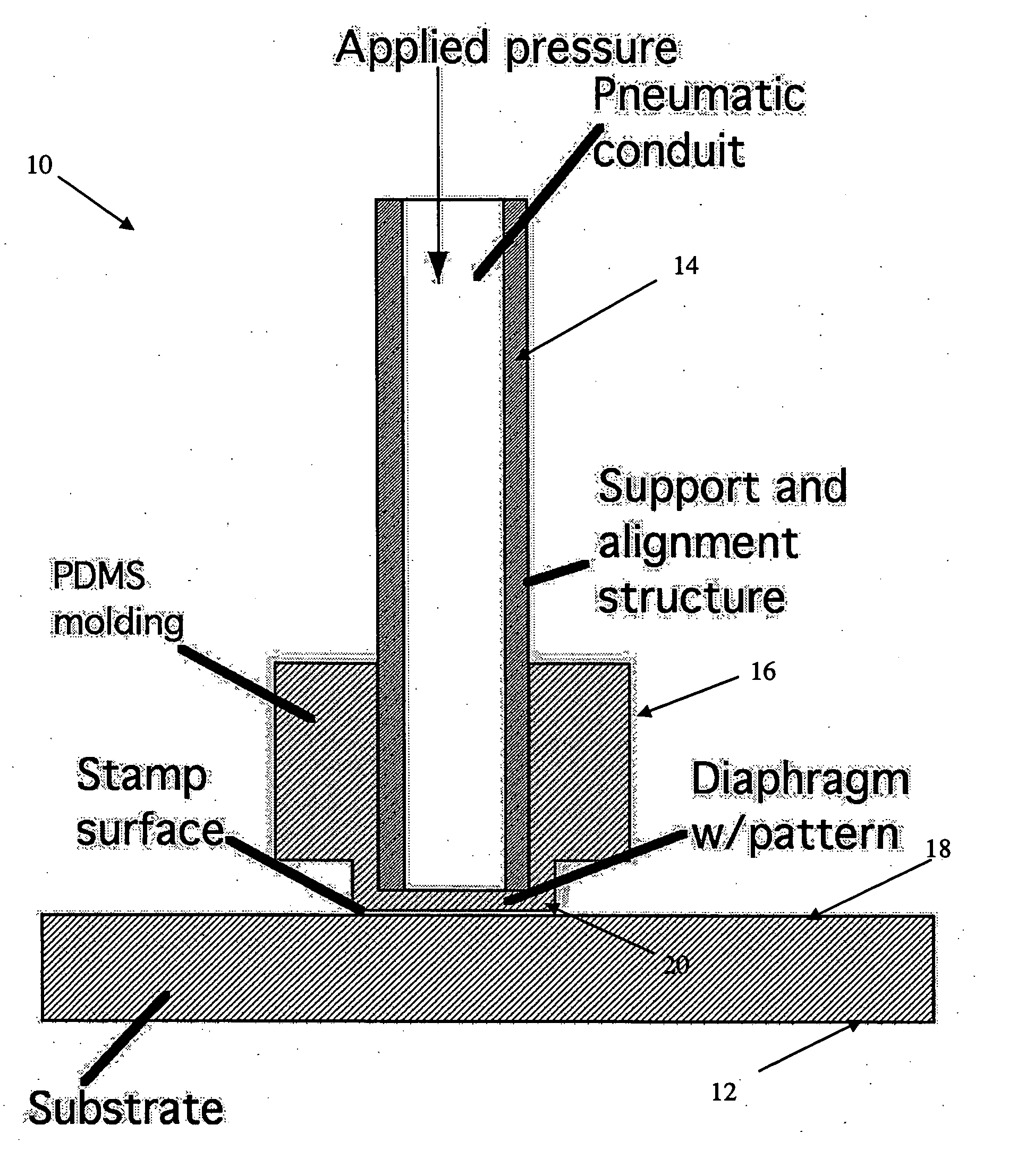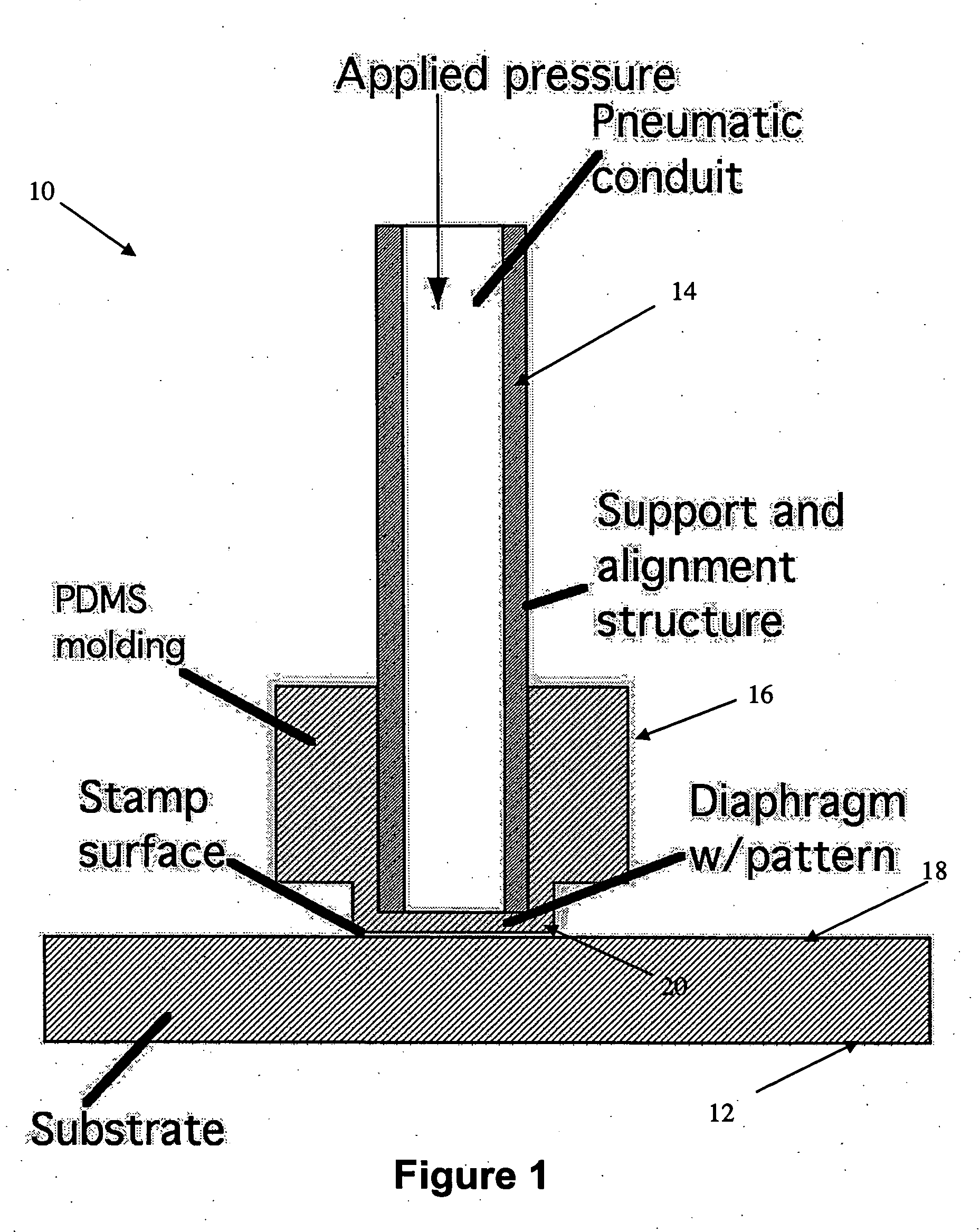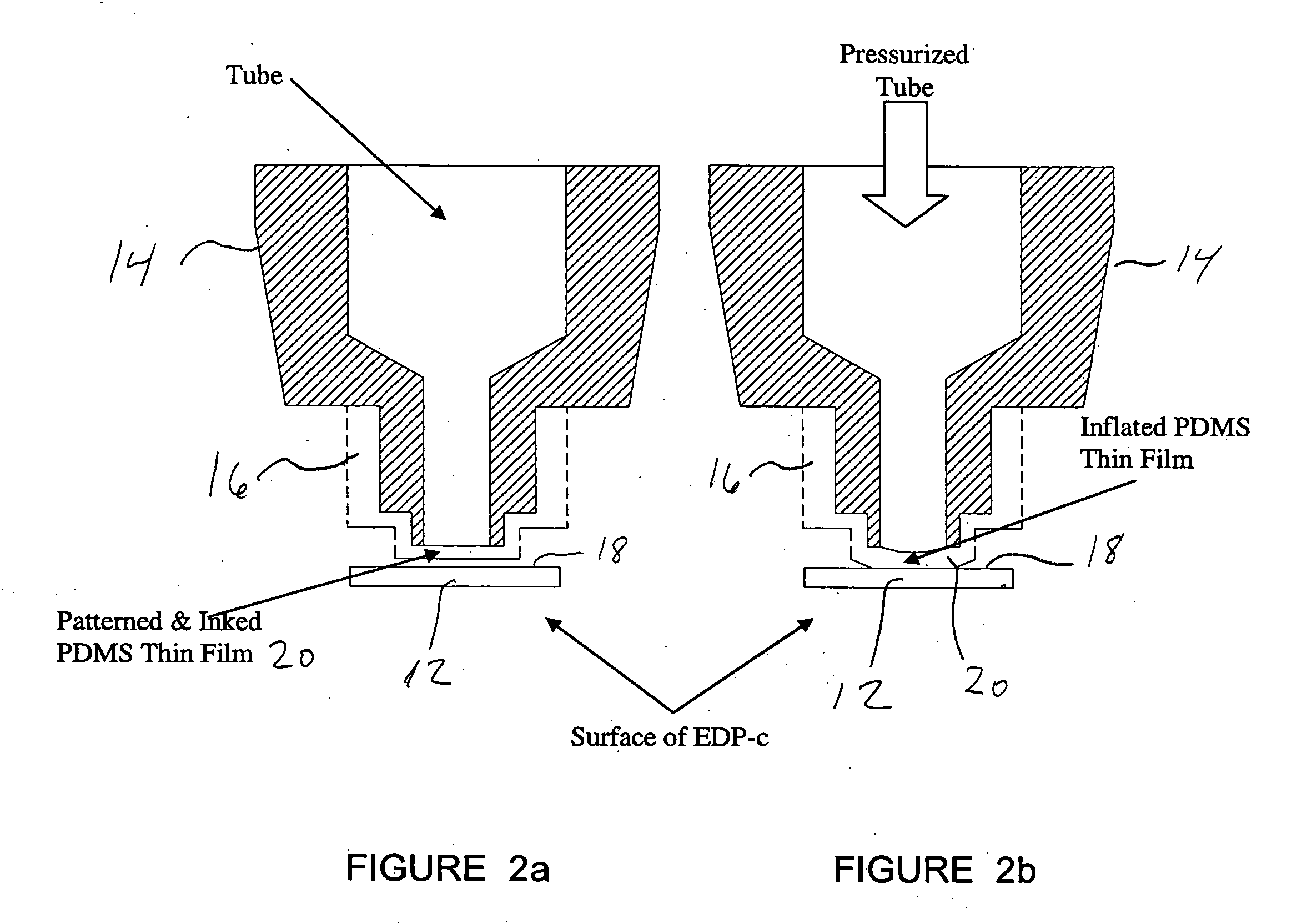Method and apparatus for micro-contact printing
a micro-contact printing and printing method technology, applied in biochemistry apparatuses, biochemistry apparatus and processes, nanotechnology, etc., can solve the problems of micro-contact printing, inability to achieve reliable contact between stamp surface pattern elements and substrates, and pattern distortions of unacceptable magnitud
- Summary
- Abstract
- Description
- Claims
- Application Information
AI Technical Summary
Benefits of technology
Problems solved by technology
Method used
Image
Examples
Embodiment Construction
[0019] The present invention allows for highly uniform contact between a stamp containing surface pattern elements and substrate while requiring only relatively coarse positioning of the stamp and substrate. FIG. 1 is a sectional view of a stamp integral with a support and alignment structure shown generally at 10 engaging a substrate 12 to be printed with a pattern. Stamp 10 includes a rigid structural support and alignment member 14, the cylindrical tubular member shown in FIG. 1 is a preferred embodiment but it will be appreciated that the member 14 need not be a cylindrical tube per se. Located over one end of tubular member 14 is a polydimethylsiloxane (PDMS) micro-contact printing stamp 16 used to transfer the pattern to the top surface 18 of substrate 12.
[0020] The PDMS micro-contact printing stamp 16 includes a diaphragm portion 20 which fits over the end of tubular member 14 which is thin enough to be able to undergo displacement in the vertical direction. Typical dimensio...
PUM
 Login to View More
Login to View More Abstract
Description
Claims
Application Information
 Login to View More
Login to View More - R&D
- Intellectual Property
- Life Sciences
- Materials
- Tech Scout
- Unparalleled Data Quality
- Higher Quality Content
- 60% Fewer Hallucinations
Browse by: Latest US Patents, China's latest patents, Technical Efficacy Thesaurus, Application Domain, Technology Topic, Popular Technical Reports.
© 2025 PatSnap. All rights reserved.Legal|Privacy policy|Modern Slavery Act Transparency Statement|Sitemap|About US| Contact US: help@patsnap.com



